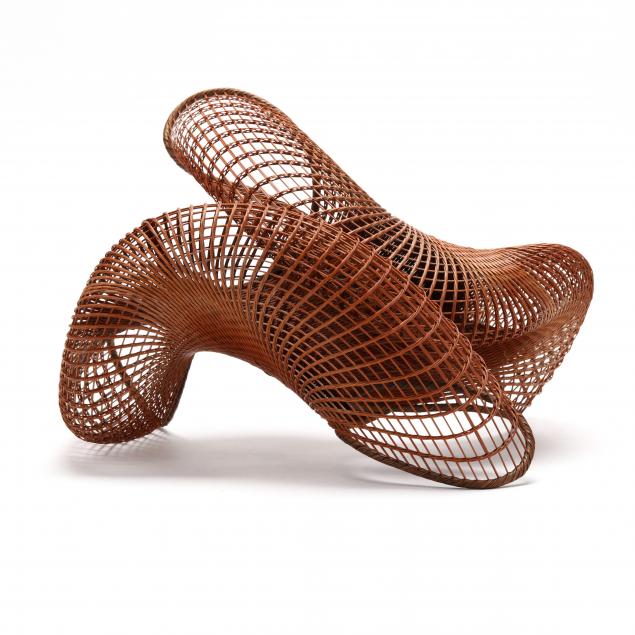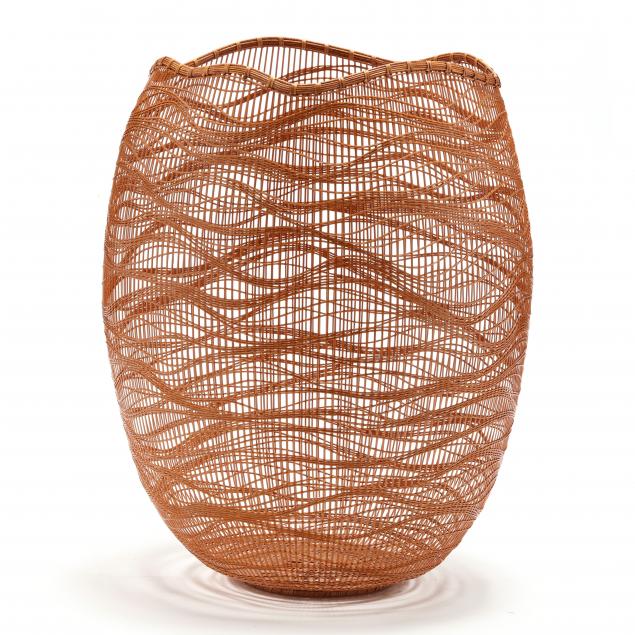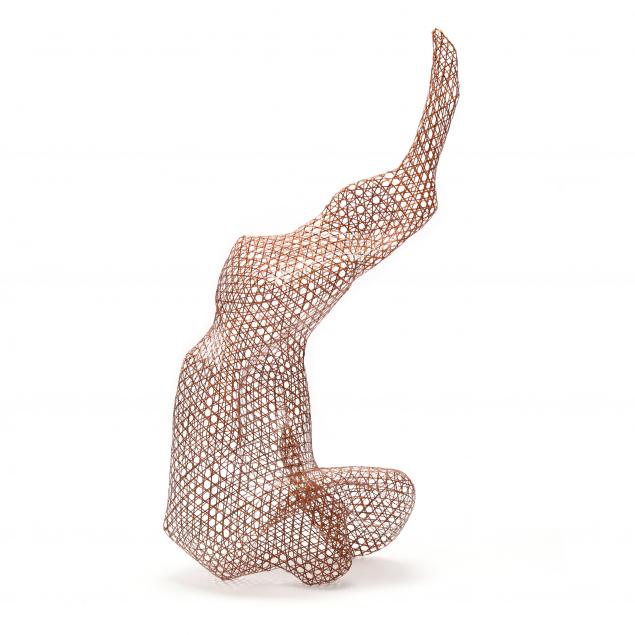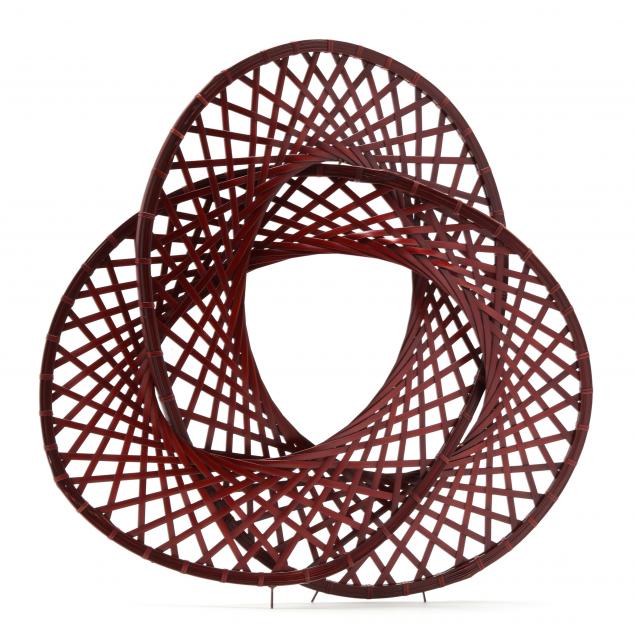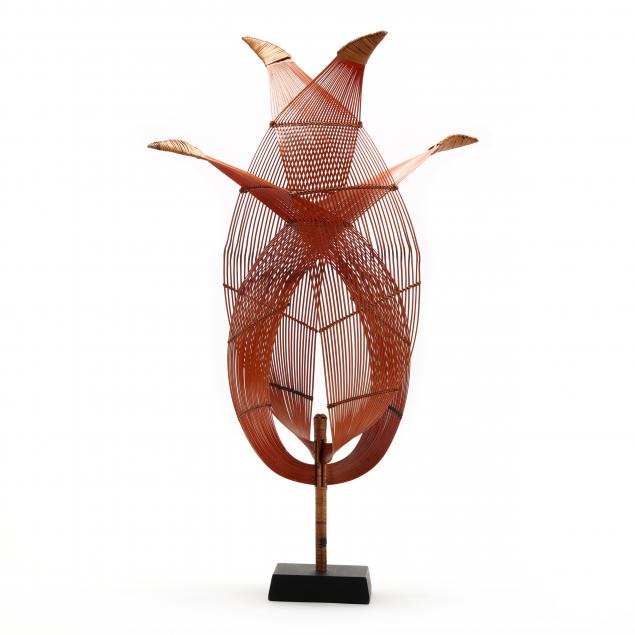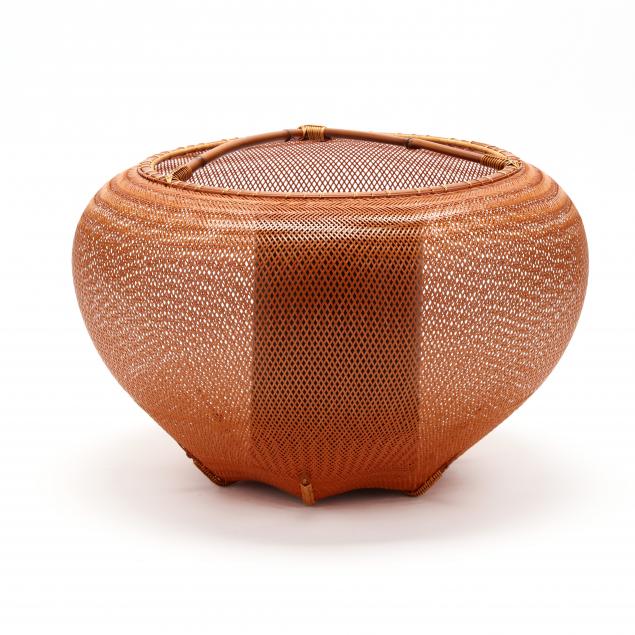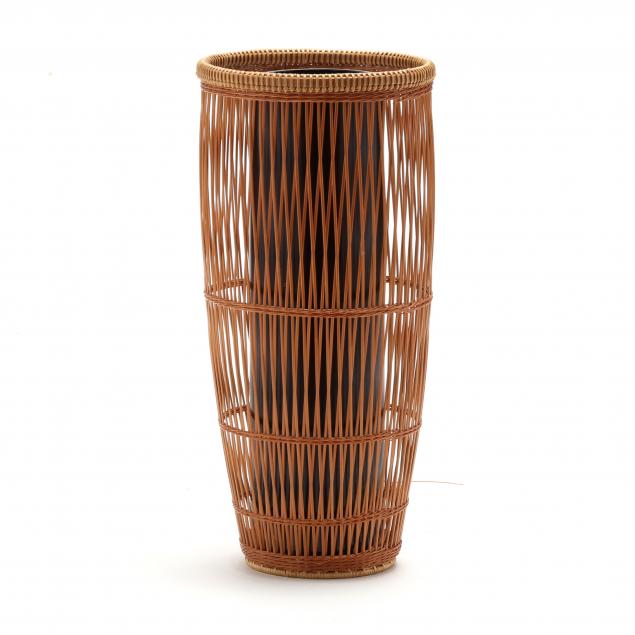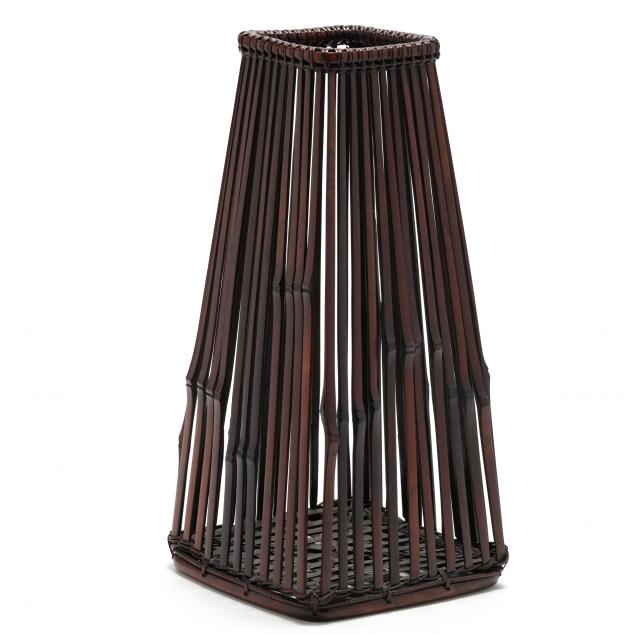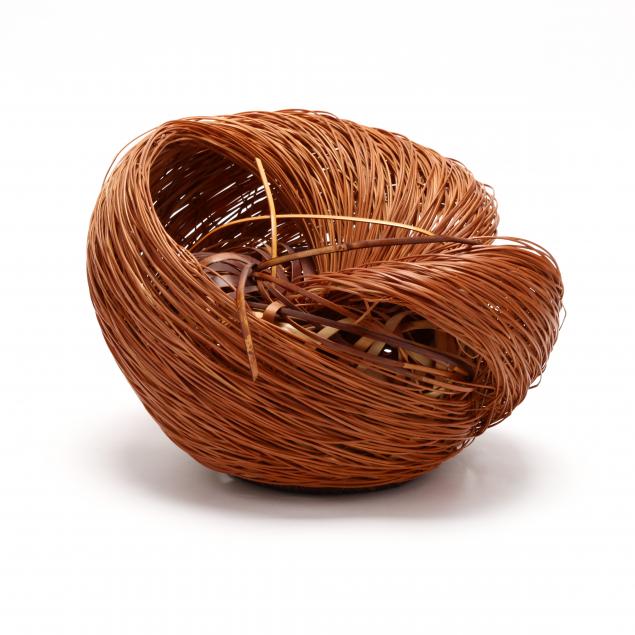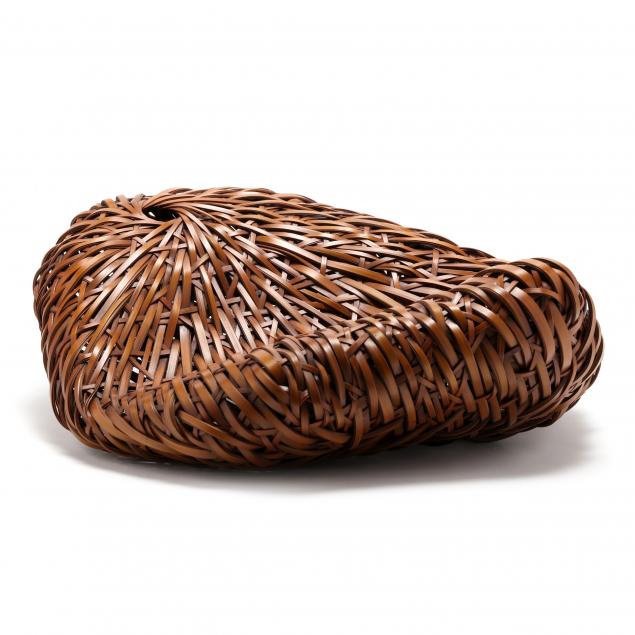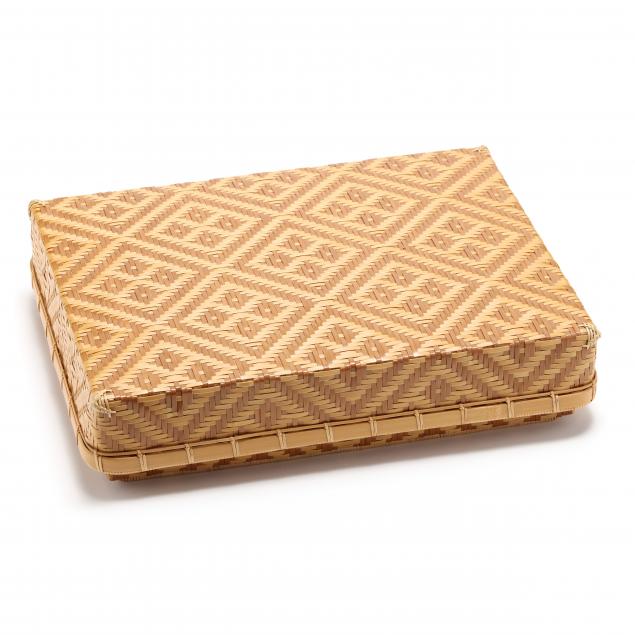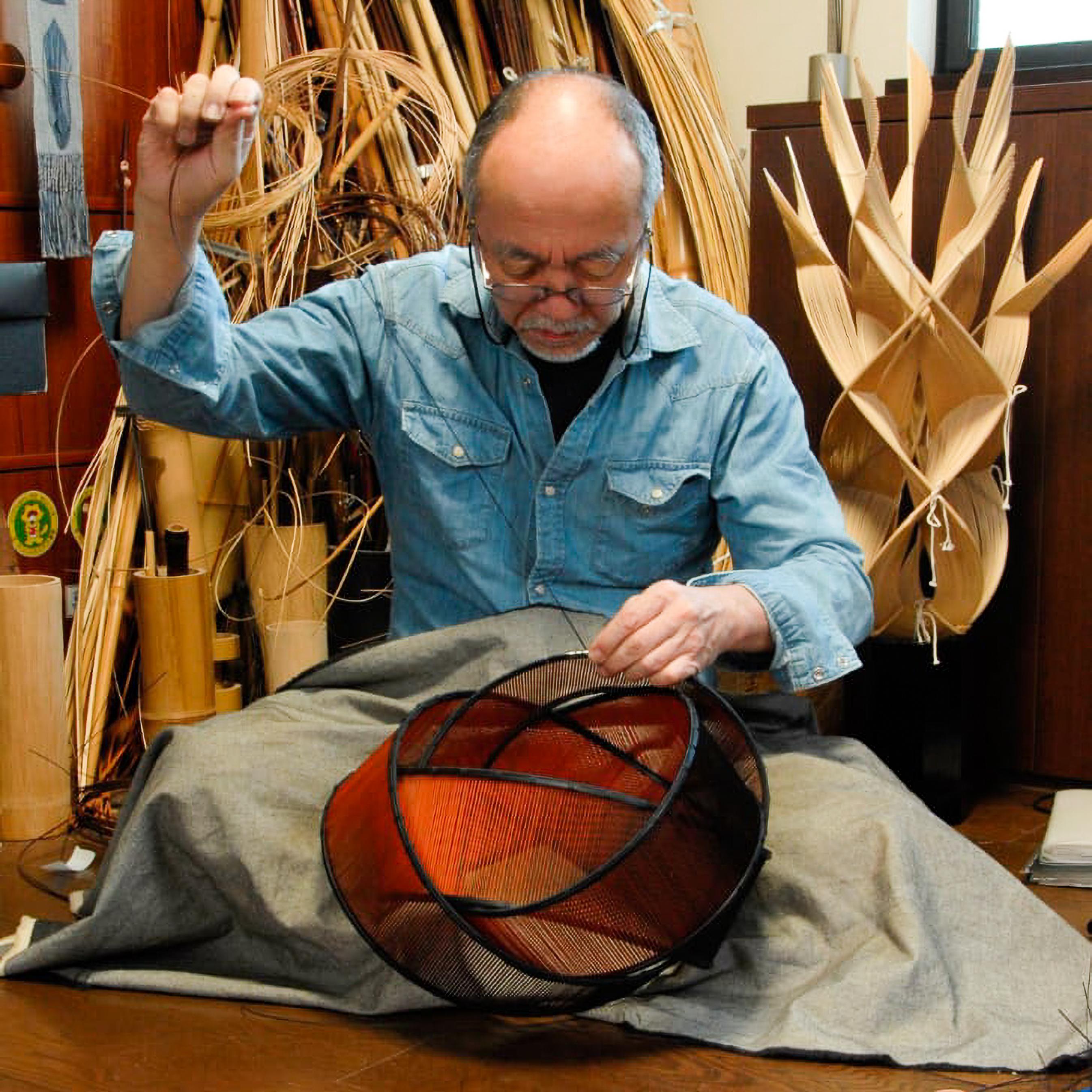
Humility, Concentration, Perseverance…and Talent
When I start a project, I have a rough idea in mind, but it really is a joint venture between the bamboo and myself. It could be a friendly partnership, or it could be a battle. Whichever the case may be, dialogue with the material and constant adjustments by the artist are essential to every part of the process. – Morigami Jin, 2018
The fabric of life is woven through the happenstance of location and resources. How we work, how we live, and how we spend the time, if any, in between. Tradition and culture are strengthened from generation to generation. Such is the story of Japanese bamboo art and the city of Beppu. Set on the southern Japanese island of Kyushu, nestled between the Beppu Bay and volcanic mountains, Beppu presents unique natural resources such as nutrient rich hot springs and vast forests of bamboo. These two geological factors set the foundation for a rich artistic tradition of bamboo working, which in time evolved from utilitarian items to works of high art.
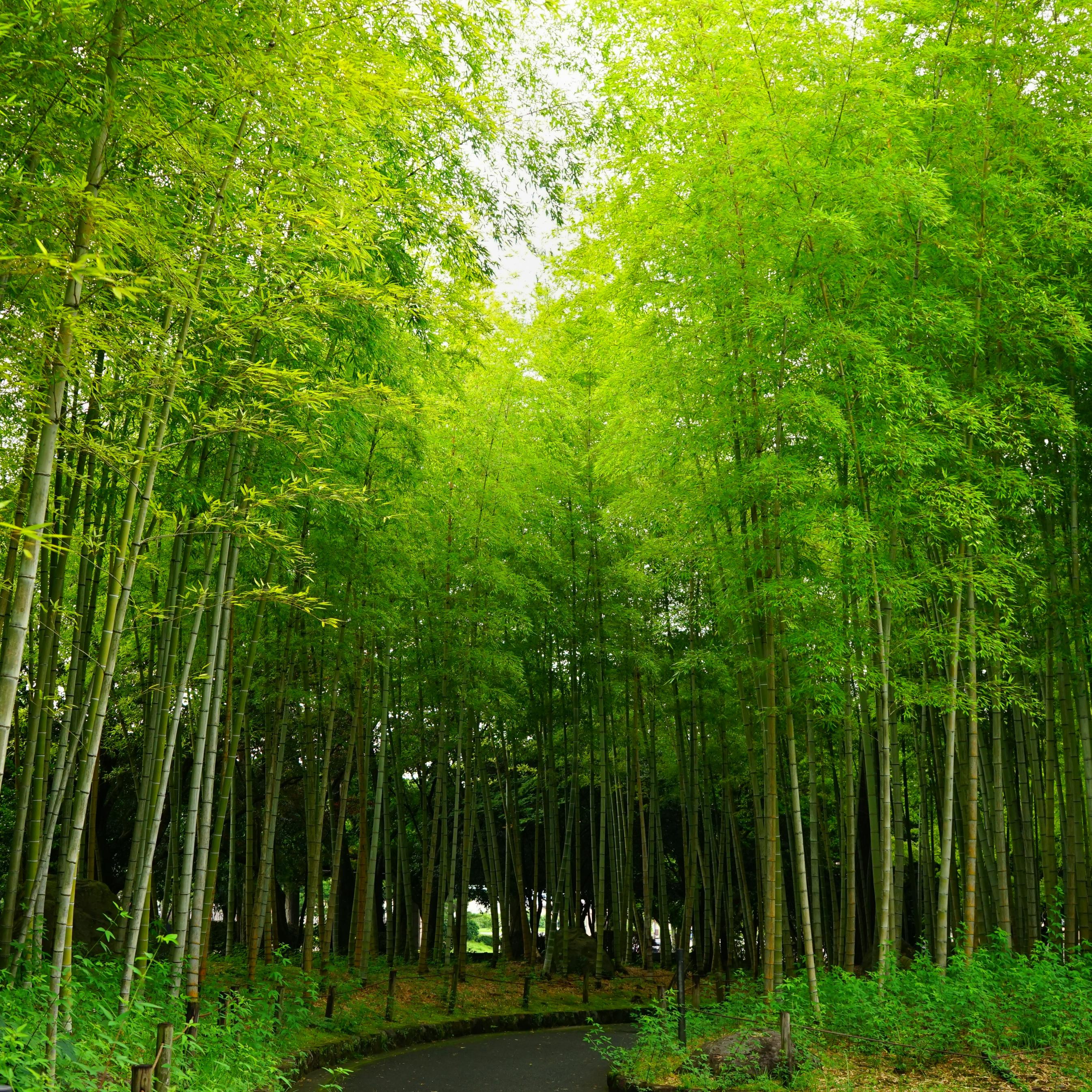
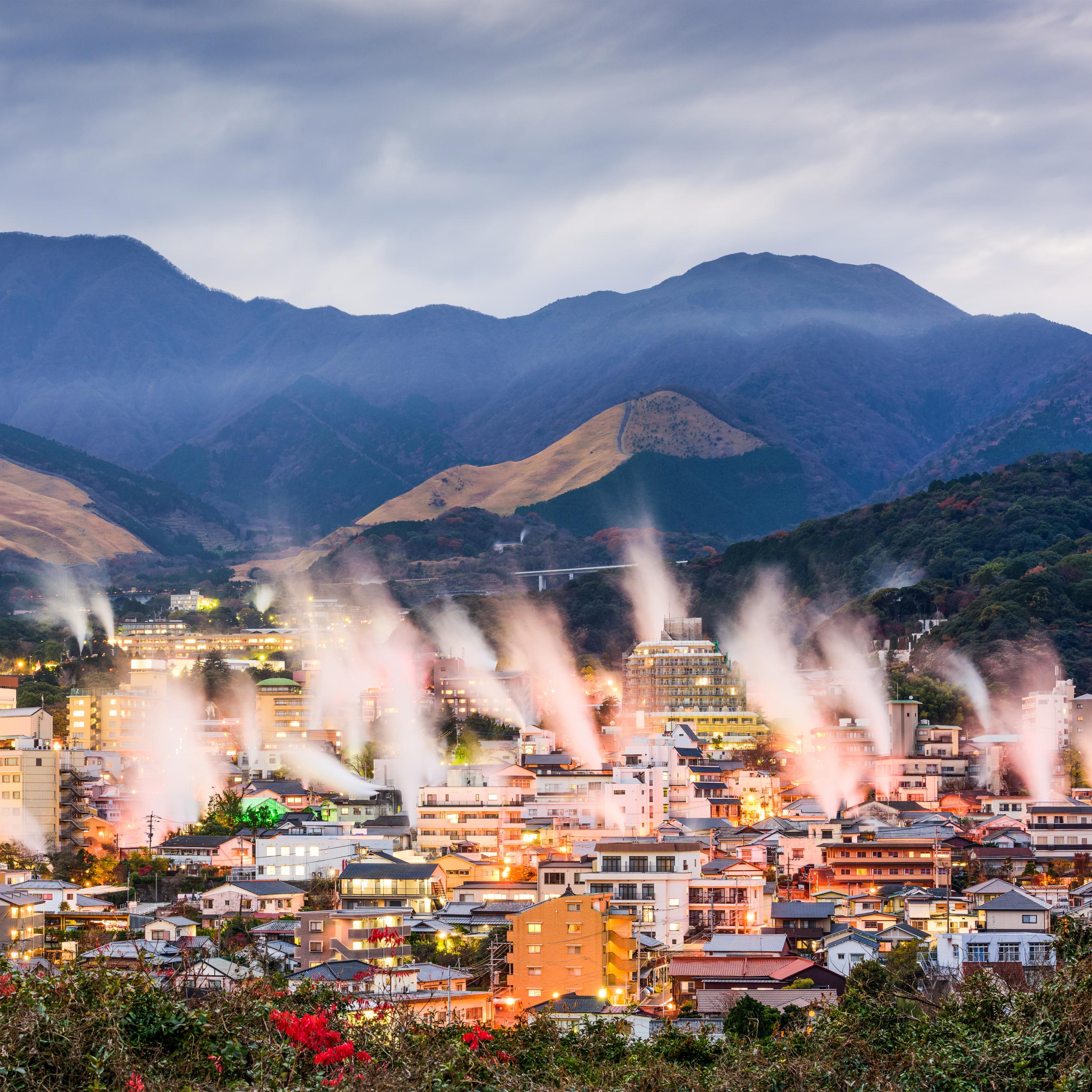
The city of Beppu, Japan is set between the bay and volcanic mountains, it is home to over 2,000 onsen (hot springs).
Since the Edo period (1603-1867), the then remote area of Beppu was known for its hot springs. Farmers from nearby villages would spend months in Beppu for the medicinal benefit offered by bathing in the springs. Bringing as little with them as possible, the visiting farmers would use locally available and necessary utensils, such as baskets and strainers. Made from available resources (bamboo), these tools and the technologies applied to make them were the result of a long tradition of applied bamboo-working to answer the needs of the day.
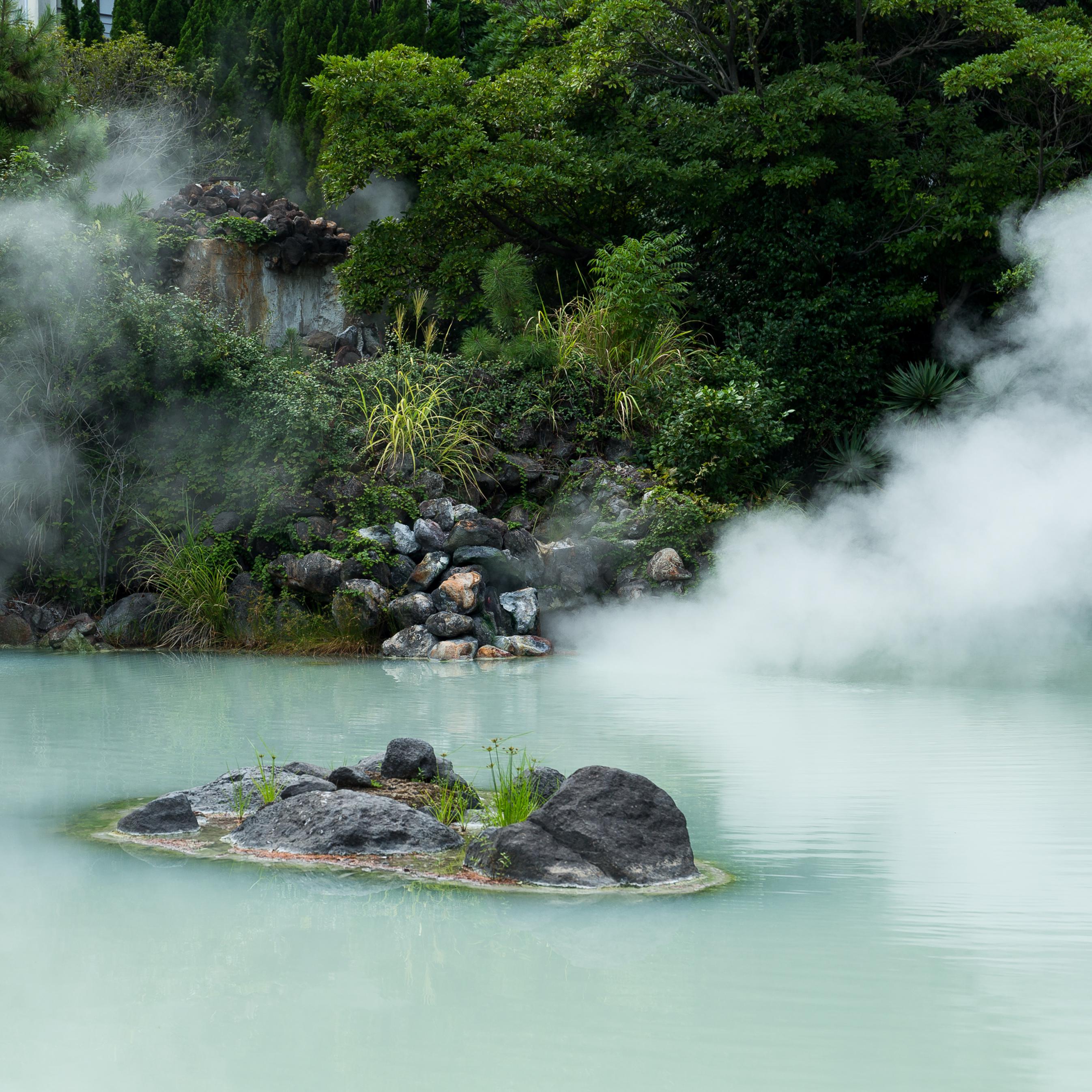
During the Meiji period (1868-1912), the Beppu hot springs transitioned from a recuperative destination for neighboring farmers to a tourist destination for well to do guests. Visitors traveled from all over Japan, so much so that eventually a regular line between Beppu, Osaka, and Kobe was started in 1923. The Meiji period was a time of rapid growth and transformation. With increasing focus on the area as a sightseeing destination, a need evolved to provide guests with souvenirs.
Looking to natural resources and tradition, bamboo again answered the call. One could not, however, provide well to do guests with utilitarian tools as keepsakes. A higher quality artistic product had to be produced. And artisans had to be trained. Thus began the seedling origins of the Oita Prefectural Beppu Advanced Occupational School. Over time, the school attracted hard working and talented students from all over Japan.
To improve the technique of bamboo craft, The Beppu Crafts Guidance Center of the Oita Prefectural Industrial Research Institute was opened in 1938. In 1950, the Beppu City Craft Research Institute was established to further explore and test bamboo technology, again with the goal of advancing the craft of bamboo working.
With the advent of inexpensive plastic products in the mid-1950s, bamboo crafters needed to respond to the market. The cumulative and collective investment of exploration, study, and practice of bamboo technology enabled artisans to adapt and refocus their efforts on high-end bamboo products. Over time, bamboo work became elevated as a path of high level art, so much so that in 1967 Shounsai Ikuno of Beppu City was designated as the first Living National Treasure in bamboo craft. In 1979, Beppu Bamboo Craft was officially designated as a “traditional craft” by the Ministry of International Trade and Industry.
To improve the technique of bamboo craft, The Beppu Crafts Guidance Center of the Oita Prefectural Industrial Research Institute was opened in 1938. In 1950, the Beppu City Craft Research Institute was established to further explore and test bamboo technology, again with the goal of advancing the craft of bamboo working.
With the advent of inexpensive plastic products in the mid-1950s, bamboo crafters needed to respond to the market. The cumulative and collective investment of exploration, study, and practice of bamboo technology enabled artisans to adapt and refocus their efforts on high-end bamboo products. Over time, bamboo work became elevated as a path of high level art, so much so that in 1967 Shounsai Ikuno of Beppu City was designated as the first Living National Treasure in bamboo craft. In 1979, Beppu Bamboo Craft was officially designated as a “traditional craft” by the Ministry of International Trade and Industry.
So what are the pathways to mastering the art of Bamboo crafting? Historically, it has happened one of three ways. The first of which is being born into a family with the tradition of bamboo arts, such as the case with artist Morigami Jin. Morigami descends from several generations of bamboo artists, on both sides of his family. At the age of nineteen, while helping his family with their bamboo business, he enrolled in the Oita Prefectural Bamboo Technical Training Center.
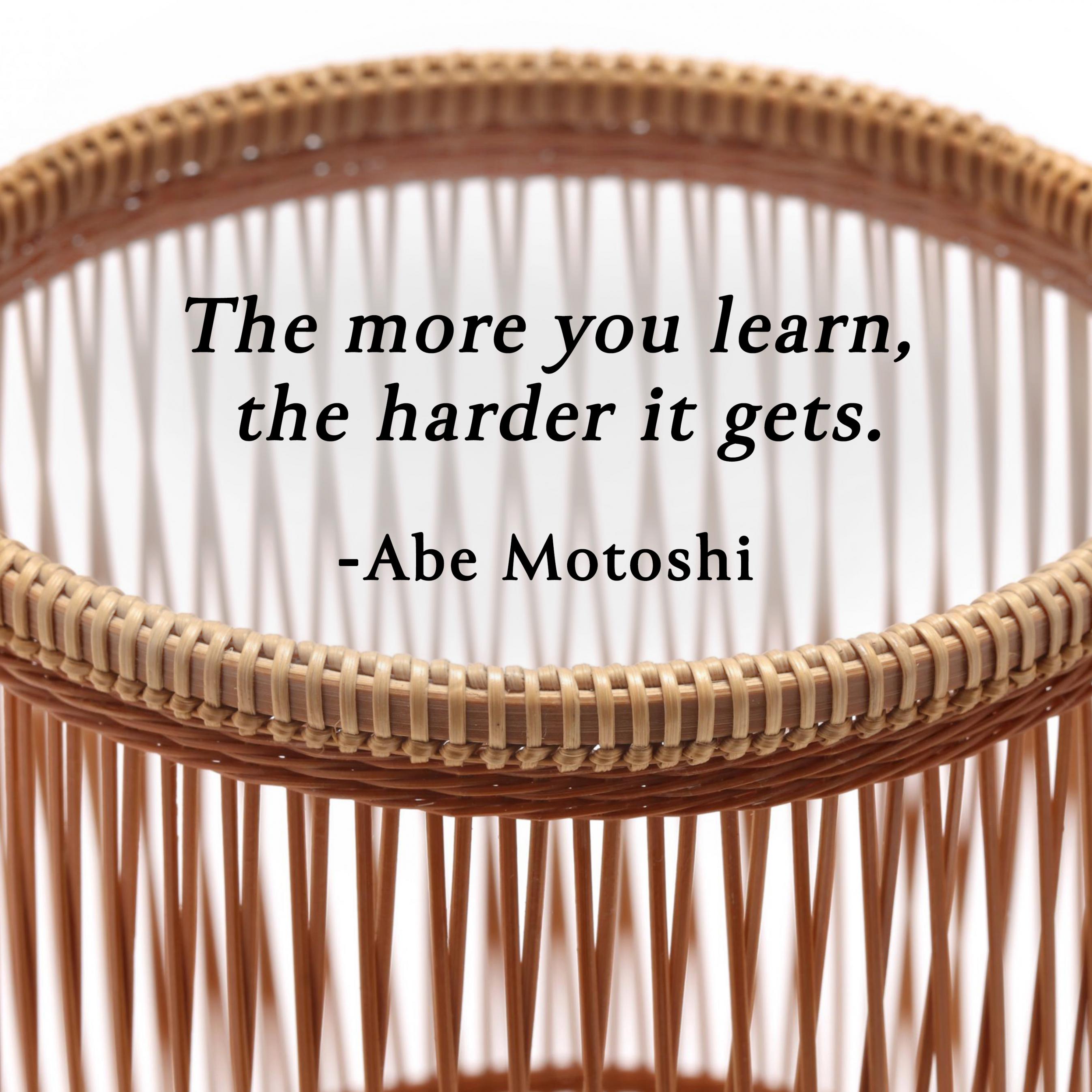
Another pathway is by taking an apprenticeship with a bamboo master. This was the journey of artists Abe Motoshi and Watanabe Shochikusai II. Born in Beppu, after studying basket craft in high school, Motoshi apprenticed with Living National treasure, Master Shono Shounsai. Also after high school, Watanabe was sent to Beppu to learn basket craft. In Beppu he was introduced to his to-be master, Watanabe Shochikusai I. Watanabe became so close with his master that he eventually assumed his master’s artistic name. A third traditional pathway is enrolling in an Occupational School, such as Beppu.
Becoming a master in the art of bamboo craft is a long and arduous process. It takes humility, it takes concentration, it takes perseverance, and it, indeed, takes talent. To master just the basics of basket craft, it takes between five to ten years. After that an artist can begin to explore the possibility of individual style. And form can be whatever the mind can dream. Far beyond utilitarian forms of years past, 20th century forms can be elegant and functional, such as, Maeda Chikubosai II’s Flower basket, Hanakago, sculptural forms such as Honda Syoryu’s Aurora, or large architectural and immersive installations (both indoors and outdoors), such as the work of Ueno Massao.
Becoming a master in the art of bamboo craft is a long and arduous process. It takes humility, it takes concentration, it takes perseverance, and it, indeed, takes talent. To master just the basics of basket craft, it takes between five to ten years. After that an artist can begin to explore the possibility of individual style. And form can be whatever the mind can dream. Far beyond utilitarian forms of years past, 20th century forms can be elegant and functional, such as, Maeda Chikubosai II’s Flower basket, Hanakago, sculptural forms such as Honda Syoryu’s Aurora, or large architectural and immersive installations (both indoors and outdoors), such as the work of Ueno Massao.
An artist needs humility to make great art. -Maeda Chikubosai II


